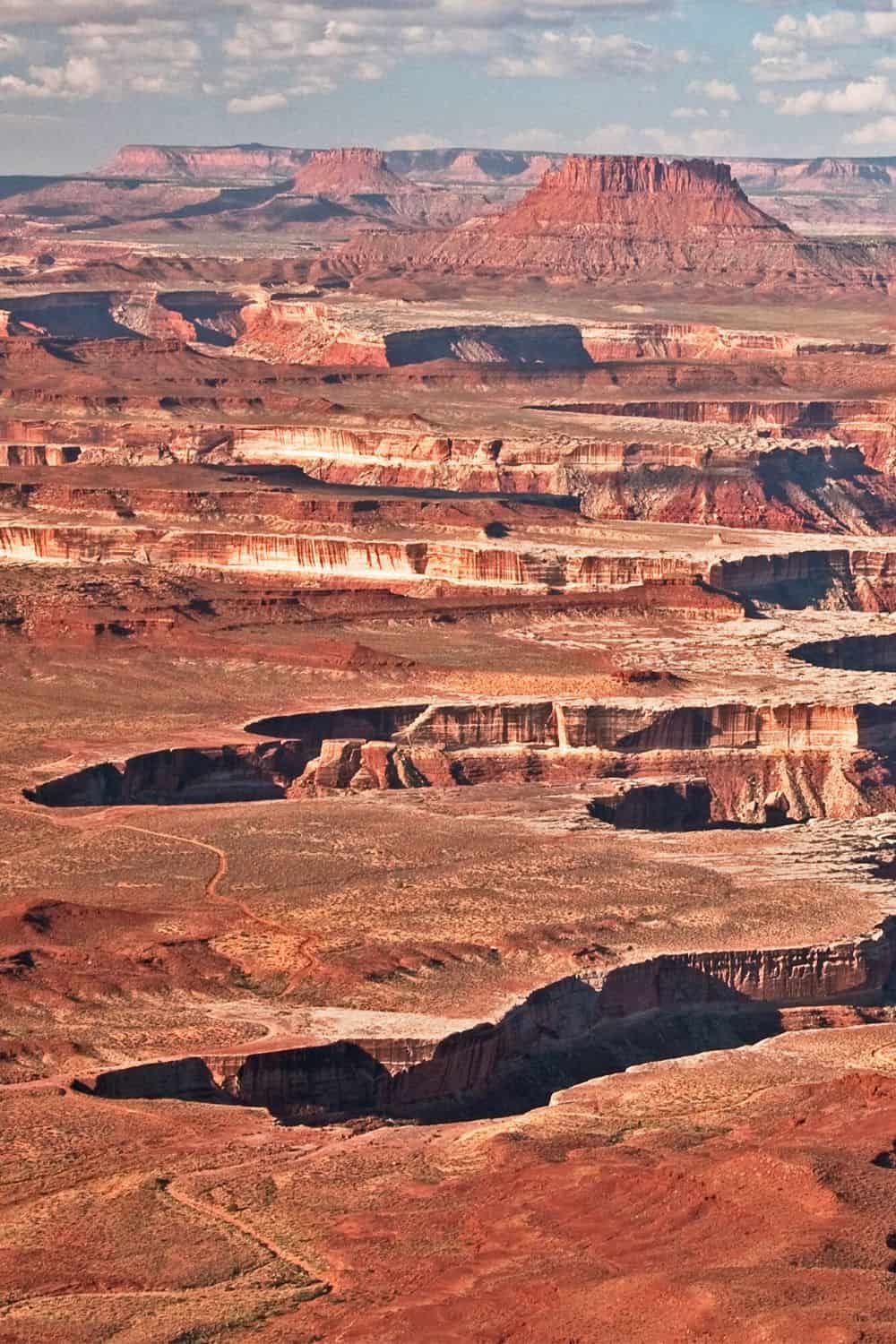
Canyonlands National Park is a fascinating and unique place located in southeastern Utah. The park covers over 337,000 acres and is characterized by its stunning canyons, towering mesas, and rugged terrain. The geology of Canyonlands National Park is complex and has been shaped by millions of years of geological activity. In this article, we will explore the geology of Canyonlands National Park and how it has influenced the formation of its unique landscape.
Canyonlands National Park is located in the Colorado Plateau, a large geologic province that covers much of the Four Corners region of the United States. The Colorado Plateau is a vast tableland that was lifted up by tectonic forces over millions of years, creating a high desert landscape characterized by deep canyons, towering mesas, and massive plateaus. The Colorado Plateau was also subjected to intense erosion, which has shaped the landscape over time, creating the stunning geological features that we see today.
The rocks of Canyonlands National Park are primarily sedimentary, meaning that they were formed from the accumulation of sediments such as sand, silt, and clay. These sediments were deposited over millions of years in shallow seas, river deltas, and floodplains. As the sediments accumulated, they were compressed and cemented together to form solid rock. The sedimentary rocks of Canyonlands National Park are primarily sandstone, shale, and limestone.
One of the most distinctive features of Canyonlands National Park is its canyons. These canyons were formed by the erosion of the soft sandstone and shale that makes up much of the park’s geology. Over millions of years, water, wind, and other natural forces have carved deep gorges into the rock, creating a complex network of canyons and valleys. The canyons of Canyonlands National Park are often steep-sided and feature towering cliffs and spires that are a testament to the power of erosion.
Another unique feature of Canyonlands National Park is its mesas. Mesas are flat-topped hills that rise above the surrounding landscape. They are formed from resistant rock layers that are more resistant to erosion than the surrounding rock. Over millions of years, the soft rock around the mesas eroded away, leaving behind these towering features. The mesas of Canyonlands National Park are often capped with a layer of hard sandstone that protects them from further erosion.
The geology of Canyonlands National Park is also characterized by a series of rock layers that are exposed in the park. These layers tell the story of millions of years of geological activity and provide a window into the earth’s past. The oldest rocks in the park are the sedimentary rocks of the Chinle Formation, which were deposited over 200 million years ago in a shallow sea that covered much of western North America. These rocks are characterized by their reddish color and the presence of fossils of ancient reptiles such as crocodiles and dinosaurs.
Above the Chinle Formation is the Wingate Formation, a layer of sandstone that was deposited around 200 million years ago. The Wingate Formation is one of the most important rock layers in Canyonlands National Park, as it forms the base of many of the park’s mesas and is responsible for creating the park’s distinctive landscape. The Wingate Formation is characterized by its vertical cliffs, towering mesas, and deep canyons.
Above the Wingate Formation is the Kayenta Formation, a layer of sandstone and shale that was deposited around 190 million years ago. The Kayenta Formation is a relatively thin layer, but it is important because it forms a cap on many of the park’s mesas, protecting them from further erosion.
Related posts:
The Shafer Trail is a 19-mile dirt road that winds through the rugged landscape of Canyonlands National Park in Utah. This thrilling drive takes you along the canyon rim, through narrow switchbacks, and down a steep descent into the p...
Canyonlands National Park is a vast and stunning landscape located in southeastern Utah. The park is known for its rugged canyons, towering mesas, and otherworldly rock formations, which have been shaped over millions of years by the ...
Canyonlands National Park is located in southeastern Utah, United States. It covers an area of more than 337,000 acres and is home to some of the most incredible natural wonders in the country. One of the most popular activities in th...
Canyonlands National Park is a breathtaking landscape located in southeastern Utah, USA. Covering over 337,598 acres, the park is divided into four distinct districts: Island in the Sky, The Needles, The Maze, and the Colorado and Gre...
Canyonlands National Park is located in southeastern Utah and is known for its unique landscape of canyons, mesas, and buttes. The park covers over 337,000 acres and is divided into four distinct districts: Island in the Sky, The Needles, T...
Canyonlands national park in southern Utah is well-known for its spectacular natural desert landscape shaped by the Colorado River and other mountain ranges. The park is also known for being the home of the Cedar City-Brian Head Tourism Development. ...